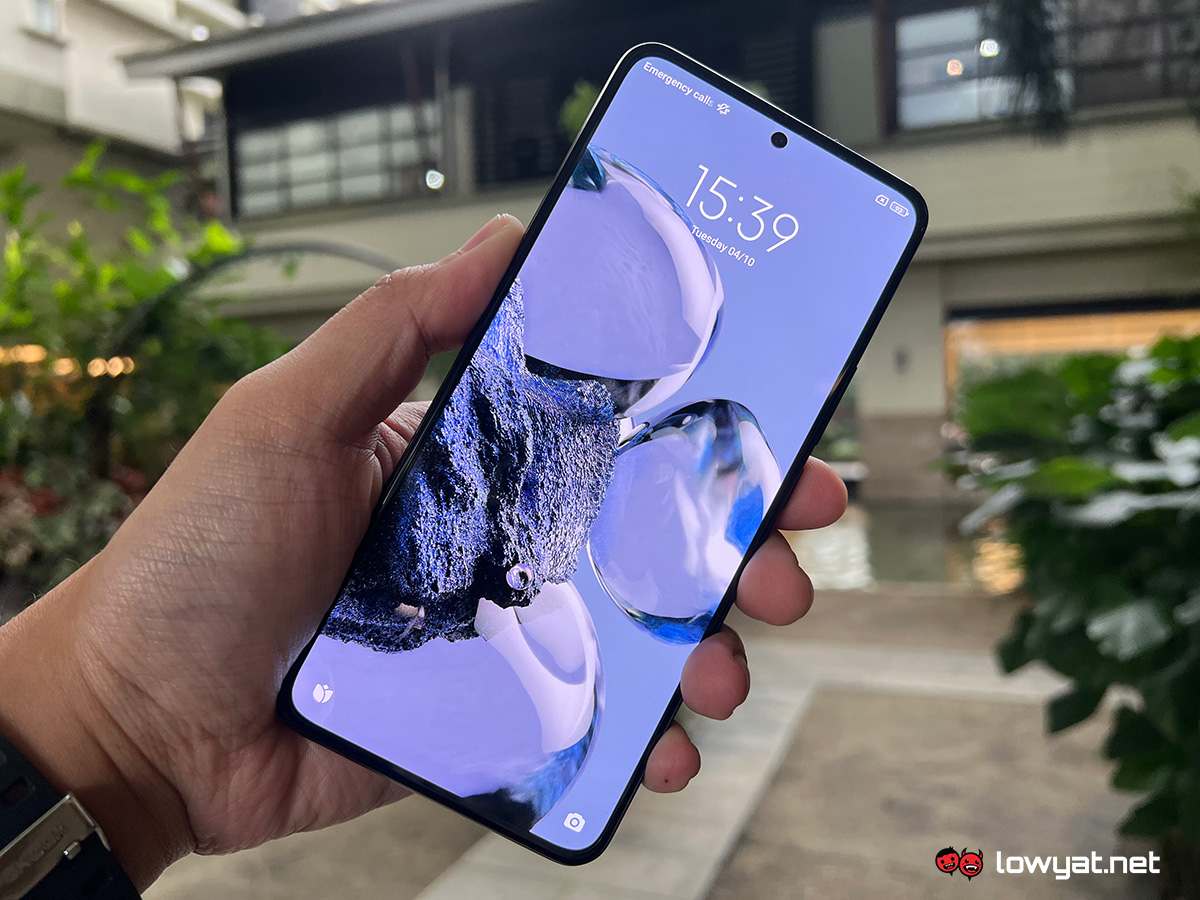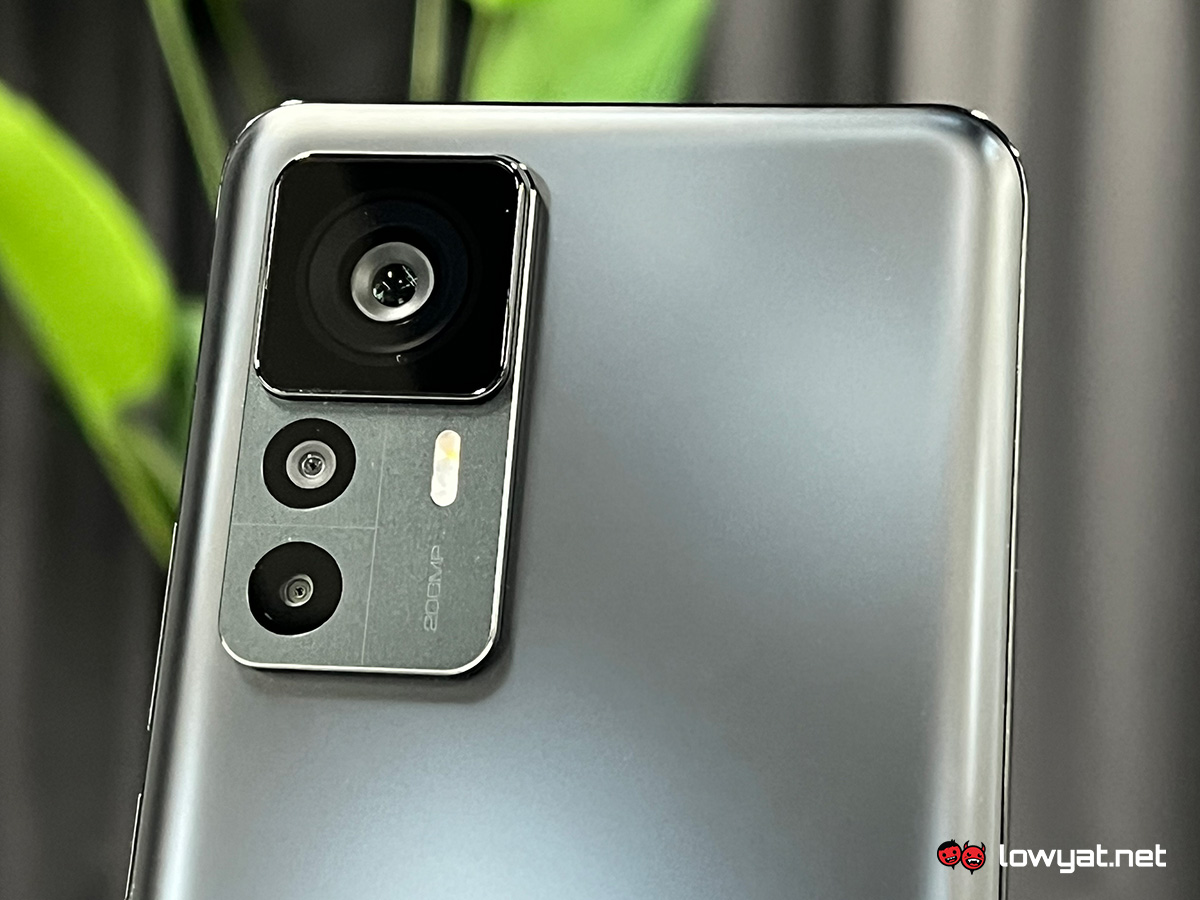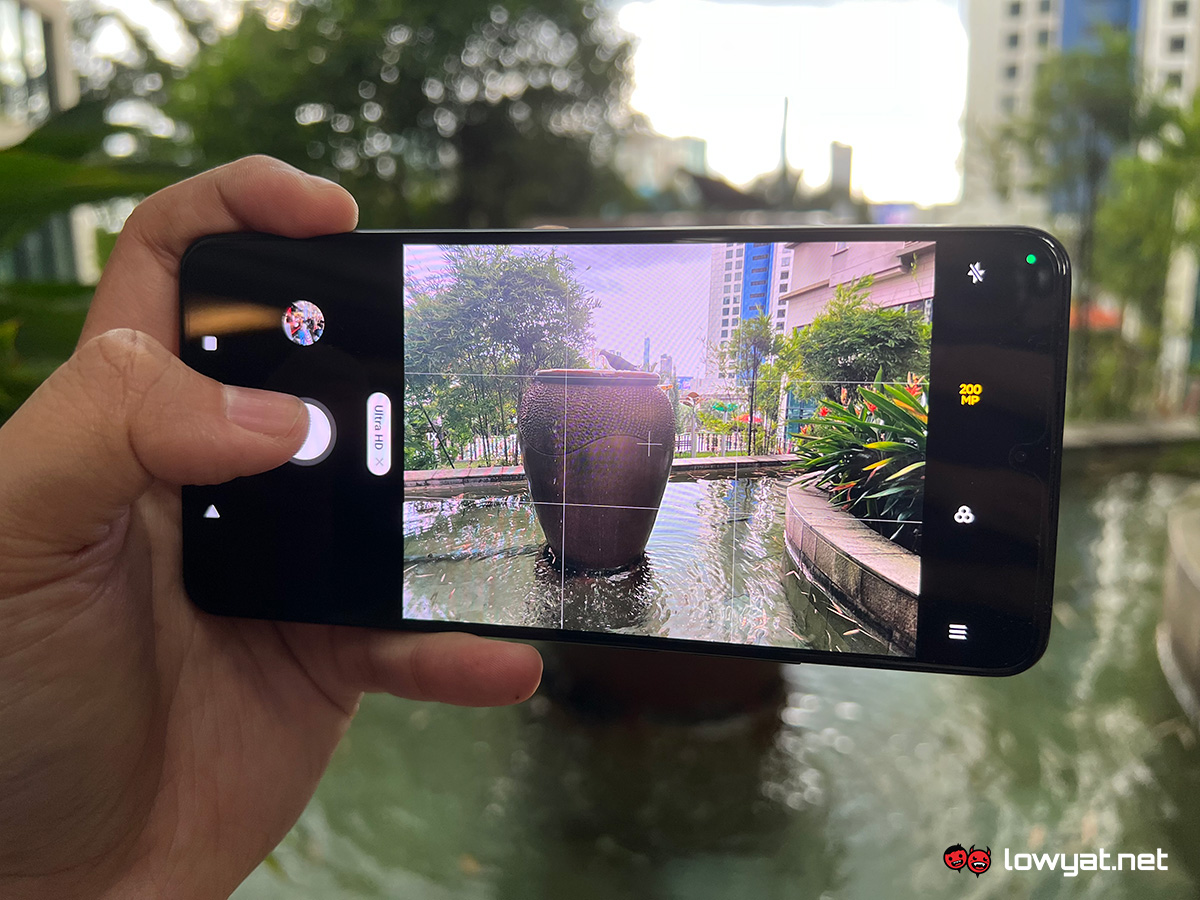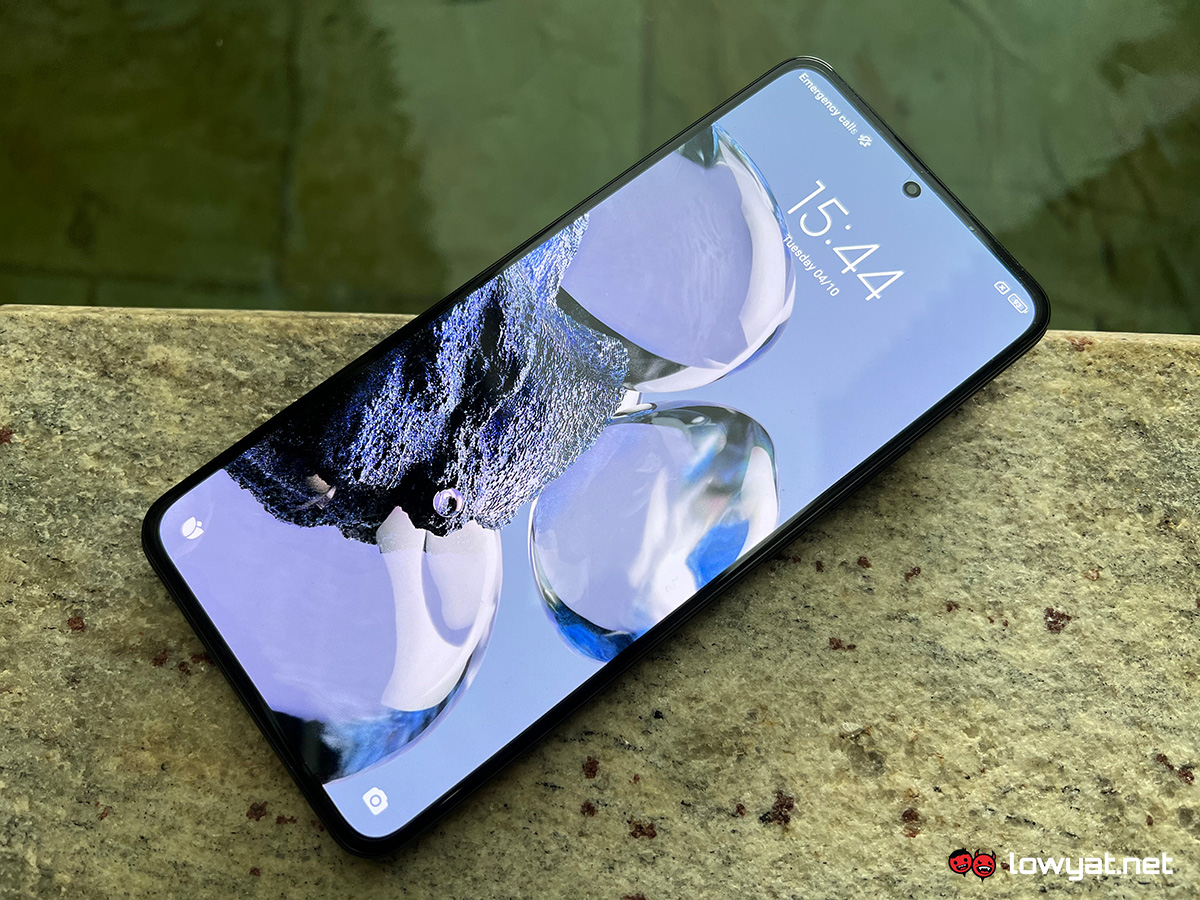Flat display and camera layout notwithstanding, the newer model sports the familiar Xiaomi 12 series’ aesthetics – complete with the signature curves on the surrounding frames and rear panel. In fact, it is almost identical to the Xiaomi 12 Pro, especially in terms of size and weight.
While I find no problem using the phone with just one hand in most regular situations, expect to use both when trying to reach certain buttons or icons due to the display’s large size. By the way, a typical silicon case is also included in the packaging, should you need it. The 12T Pro packs a 6.67-inch AMOLED screen with 120 Hz adaptive refresh rate, which is quite pleasant for reviewing photos, watching videos, and gaming. The latter two experiences are further complemented by the phone’s excellent, loud and clear Harman Kardon stereo speakers.
Equipped with the powerful Snapdragon 8+ Gen 1 chipset, Xiaomi’s latest flagship performs superbly with no hint of struggle when running any application, games, or even multitasking. On that note, handling everything on the software side of things is the brand’s own MIUI 13 platform that’s based on Android 12, which so far has provided me with a smooth and seamless experience when navigating through its interface.
Now we’ve arrived at the feature that everyone’s looking forward to: the Xiaomi 12T Pro’s imaging system. So, does the 200 MP camera live up to the hype? Naturally, I’ll be reserving most of my opinions for a more in-depth review of the phone, but I can share that the primary camera has left a good first impression so far. Regardless of lighting condition, utilising the full brunt of the 200 MP provides stunningly detailed shots at a whopping 16384 x 12288 pixel resolution, which averages over 50 MP in size. While impressive, relying on the Ultra HD mode on the 12T Pro will impact the imaging system’s shutter speed, so you’re better off using the default camera mode if you’re planning to capture subjects that are in motion. The high resolution capabilities of the sensor also applies to video recording, enabling up to 8K footage at only 24 frames per second (fps). In terms of stabilisation, the phone’s onboard OIS is decent enough, and there is a Super Steady mode if you wish to smoothen your recordings even further. However, keep in mind that the latter option will limit video resolution to 1080p at 30 fps. Of course, there’s the ultra-wide and telephoto shooting modes which, respectively, deliver equally decent results. However, some will be disappointed to know that the latter only offers up to 2x optical zoom.
All in all, the new Xiaomi 12T Pro looks to have secured a spot amongst this year’s flagship-tier smartphones. And just in case you missed it, the device itself is slated to arrive in Malaysia on 13 October 2022 at a starting price of RM 2,699, while the standard model is offered in a single memory configuration at RM 1,999. For a more in-depth analysis of the Pro variant’s performance in hardware, imaging, battery and more, be sure to look out for my full review soon.



